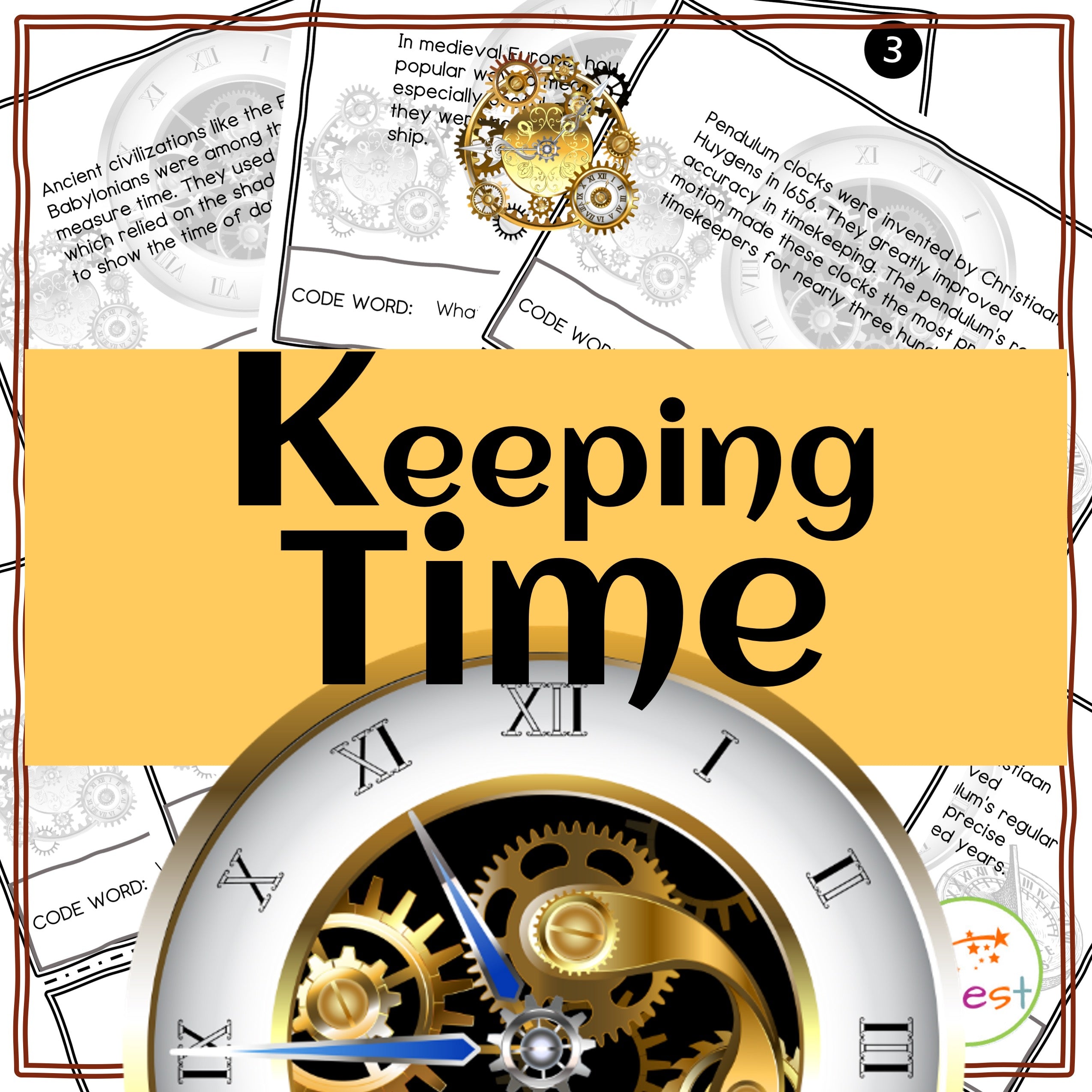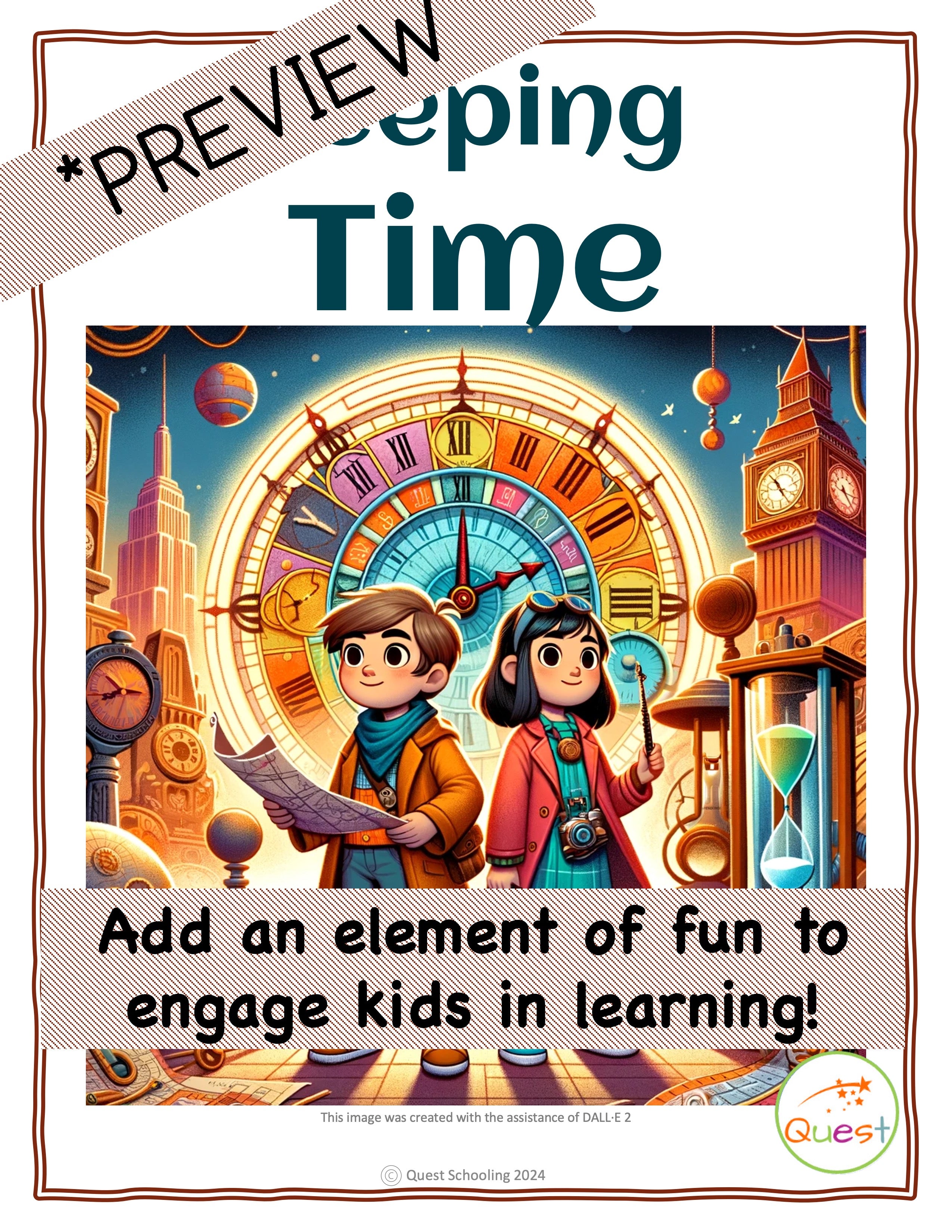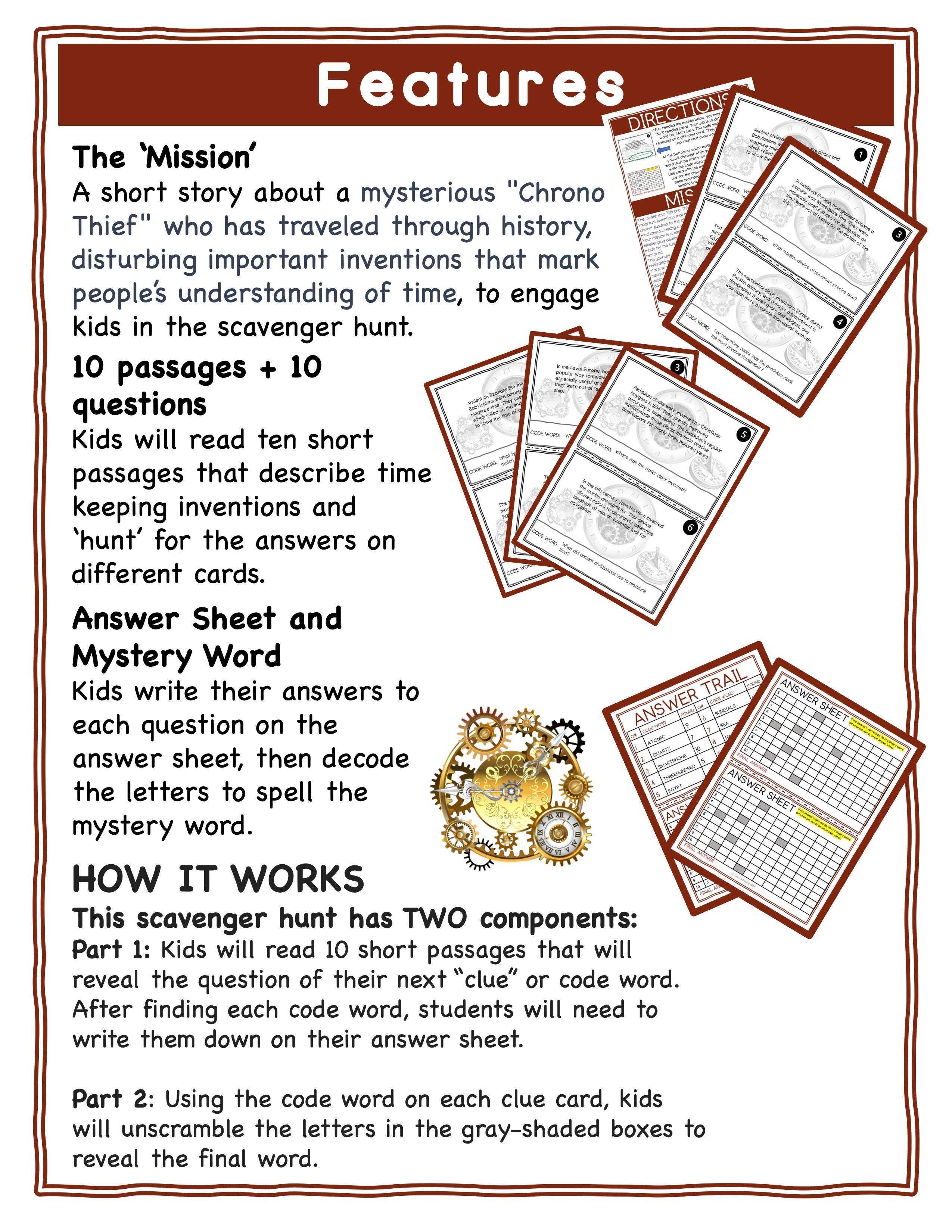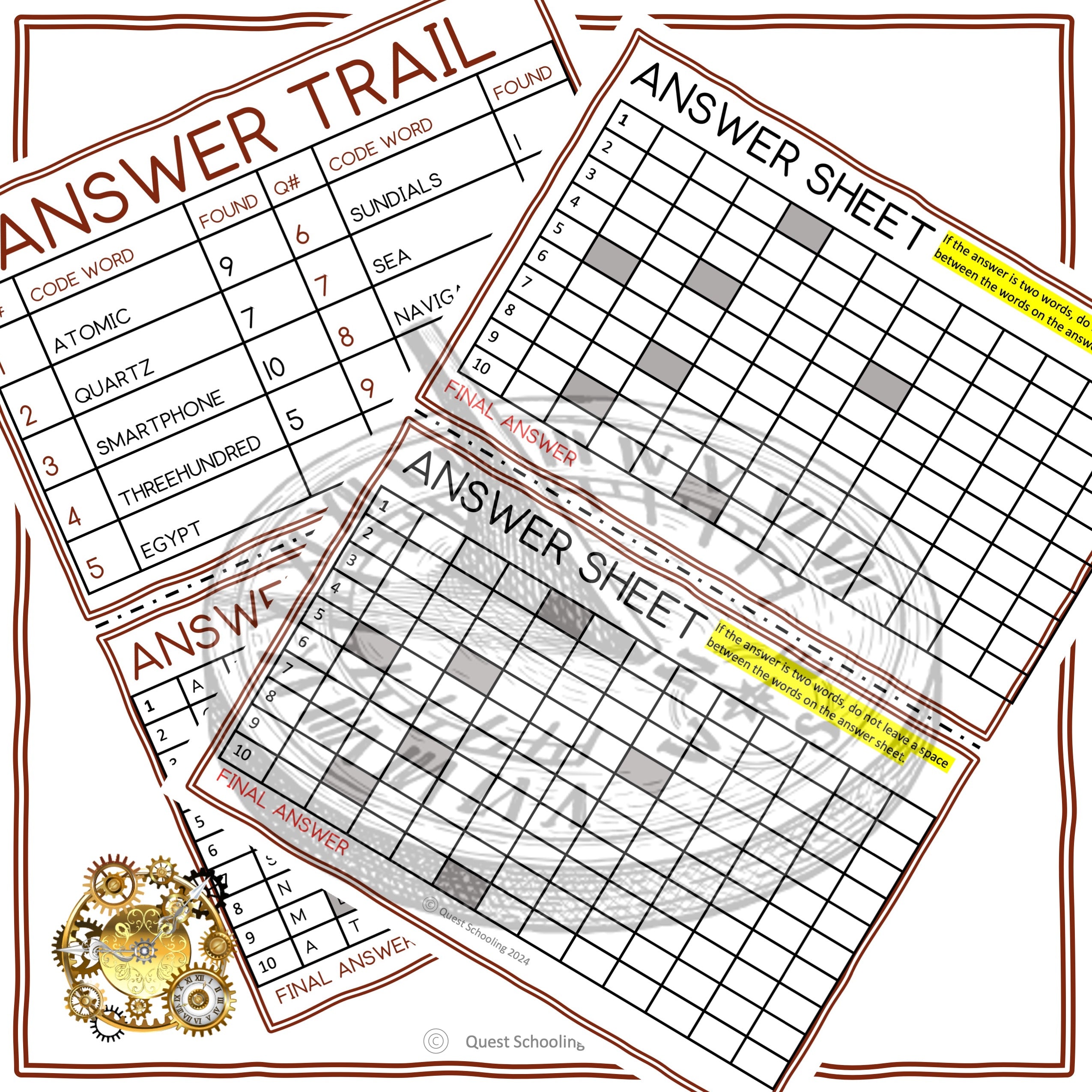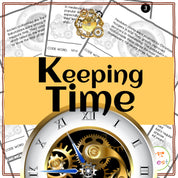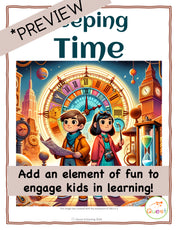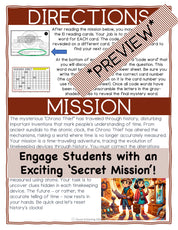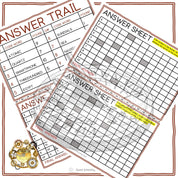Keeping Time Educational Scavenger Hunt
The Keeping Time Scavenger Hunt uniquely blends reading excerpts, question trails, and secret words! This activity encourages students to move around the classroom, using their reading comprehension skills to respond to questions.
Each "card" features a short reading excerpt about the subject, a "question trail," and a secret word. Students will receive "secret word questions" at the bottom of each card. They use the questions to guide them on their scavenger hunt to find the “secret word” answer. To find the answer, students must “hunt” through the reading passages on the tops of the other cards until they find the passage that has the answer. The questions on the bottom of the cards are randomly placed so that students must go on a scavenger hunt.
This fun, front-loading lesson includes 10 short passages, an ultimate mystery word, and a series of questions that create a “question trail.” Each question at the bottom of each card will lead to discovering a new secret word.
If you’re looking for a unique way to teach about the history of keeping time from sundials to atomic clocks and smartphones, this is ideal. You can hang the cards on the wall, scatter them on the floor, place them on desks, hide them, or pass them amongst students. The arrangement within your classroom is entirely your choice.
Students will engage with the brief story about the 'Chrono Thief’ who has altered time-telling mechanisms, to pique their interest. They will then use the ten reading passages on the topic of historical mechanisms to tell time, honing their reading comprehension and critical thinking skills as they navigate the room in search of text evidence.
To ensure comprehension of the topic, they'll respond to questions found within the reading passages. No previous knowledge is required.
Students can work in teams, pairs, or individually. They can also race to answer 10 questions. A bit of friendly competition often boosts engagement. They will read the material, answer 10 questions, and decode a final “secret” word.
HOW IT WORKS: A "secret mission" is announced, and students select a card to begin. The starting point DOES NOT MATTER. There is no order to complete the questions on the cards. The secret code question on each card will prompt students to hunt for the answer on another card. Simply print the clues, cut them in half, and either display or hide them!
WHAT IS INCLUDED?
✏️10 Short Reading Passages
✏️ 10 Question Trails
✏️ Student Answer Recording Sheet
✏️ Student Directions
✏️ Teacher Directions
✏️ Teacher Answer Key
Terms of Use
Please note: Purchase of this product is for Personal and Classroom Use ONLY
Not for Commercial Use. Purchase of this product entitles you the right to reproduce the pages in limited quantities for single classroom use only. Copying any part of the product and placing it on the internet in any form (including a personal or classroom website) is strictly forbidden and is a violation of the Digital Millennium Copyright Act (DMCA). Copyright: Quest Schooling LLC.
After purchase you will receive a link to download the PDF file. All pages are included in the file and can be printed in black and white for immediate use.
Any or all of the pages in the PDF file can be printed and used for students across a wide range of ages/skills, or collaboratively with kids of different ages.
For example, younger kids may focus more on the design and drink recipes for the stand while older kids may also include the business plan and profit margin aspects of the project.
Depending on your student’s needs, there are several pages of scaffolding information, including vocabulary, facts, reading list, weblinks. Scaffolding can be done at any stage throughout the project as needed.
Frequently Asked Questions
-
All projects are digital download pdf files. They can be printed in gray scale or black and white and are ready for your student to use.
-
No, the projects are flexible and can be adapted to your student's grade and skill level. Each project includes a list of student activities. you can review them and decide which pages work for your student.
-
In project based learning, each student completes both the project activities and a final project. I always offer a choice of final projects to provide differentiation and give students of different skills enough options.
-
Most projects include a rubric to help you assess your students work and give your student an opportunity to assess their own work. However, each student's project will be unique to them and be a reflection of their knowledge and skill set. There is no one 'right answer' to a project. The success of a project is largely in the process of doing the project.

